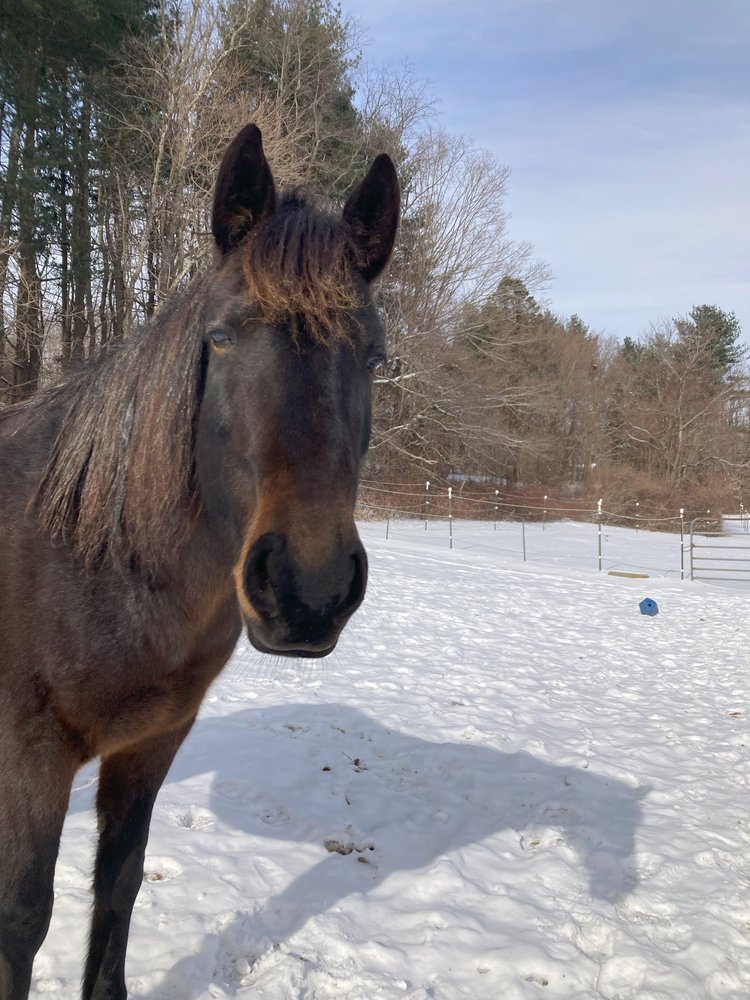Winter & Intuitive Knowing
With winter upon us, we have been deep in thought about how this season affects our land and our horses.
A book that opened my eyes to thinking of our ecosystem in a relational context was Braiding Sweetgrass: Indigenous wisdom, scientific knowledge, and the teachings of plants. The author, Dr. Robin Wall Kimmerer, who is a member of the Citizen Potawatomi Nation, shares the teaching of her people in this book to help readers understand what it means to be in a reciprocal relationship with nature (calling to question the colonial separation of humans from nature).
It was one of those reads that shook me to my core and deeply changed the way I think. I gained an understanding that our environment knows what it needs, and will take care of itself and adapt to changes. Our job as part of this environment is to honor it, listen, and participate.
I have begun to apply this thinking to my approach to horse welfare. Like we mentioned in our last blog entry, understanding the welfare of non-human species is complicated. We don’t speak the same language, so we humans, as their care-providers, often try to interpret their behaviors as indicators of their well-being.
And their communication can change across the seasons. This process of trying to interpret their communication about their needs often comes up for me intensely in the winter.
In caring for our sweet Mandy, my inner narrative around this has sounded like:
☃️ “I’m cold, so they are cold, right?! They must be cold!”
☃️ “Make sure you blanket them!”
☃️ “They aren’t drinking enough water!”
☃️ “We aren’t feeding them enough!”
Do you feel the panic? I sure do.
Thinking of the human experiences of panic, stress, and trauma, it’s important for me to really consider my experience of these thoughts and feelings.
I ask myself: Where does this come from? Is it my fear, or fear others have imparted on me?
When I pause when I am in this panic and lean into the belief that all beings - horses, humans, and land alike, intuitively know what they need:
🐴 I start to consider my relationship with my horse and how she communicates to me
🐴 I trust my knowledge sources and communication with other people who help me understand her (for example, did you know that through relationship-building, horses can let us know whether they want to be blanketed? 🤯)
🐴 I think about the concept of projection and assess whether these worry thoughts are based in Mandy’s reality or coming from my own “stuff”
When I think of Dr. Kimmerer’s book and how it made me consider this intuitive knowing, I remember that horses have the capacity to care for themselves as long as we set them up for success (given the power dynamics inherent in domestication).
When I meet their basic needs, both physical and emotional, they are able to take what they need to survive the cold, and successfully adapt to the changes in weather. It is when I micromanage and anthropomorphize that I start putting myself in a situation where I can actually unknowingly jeopardize their well-being.
Some examples of strategies that help our horses meet their holistic needs during the winter are:
☃️ 24/7 free access to forage
☃️ Water that is not frozen
☃️ Access to shelter to choose to stay dry and out of the wind
☃️ Horse mates to cuddle up to in the cold– if they’re into that
Returning to our previous conversation about perfectionism: we understand that meeting every welfare need isn’t feasible for all folks for a variety of reasons. What we are suggesting however, is that the horse industry take on this effort of examining how our human-centered thoughts and feelings might be influencing how we care for our horses.
We are so happy to be in partnership with a boarding farm who is invested in the process of meeting Mandy’s winter welfare needs. We also invite you to support our growth efforts through:
🐴 Becoming a Sustaining Sanctuary Steward
🐴 Making a one-time donation
🐴 Helping our efforts to find our forever home for the sanctuary.
If you want to learn more about equine welfare, here are some quick, reliable, and kind resources on equine nutrition and winter welfare:
The Feed Room Chemist podcast (PhD Equine Nutritionist for foraging strategies)
And also check out the University of Minnesota’s Equine Extension (link to their recommendations on horse management strategies during the winter).
All our best,
Nicole and the Sanctuary Team


